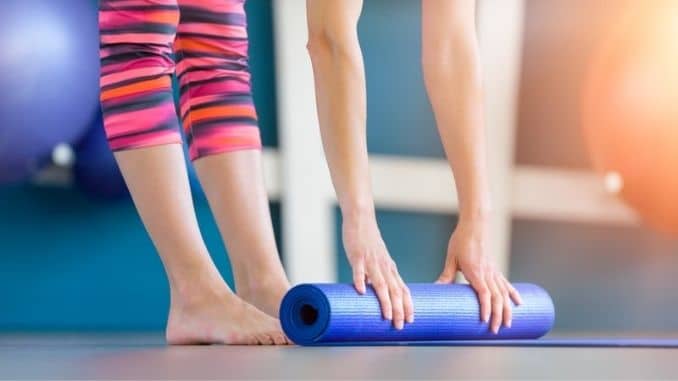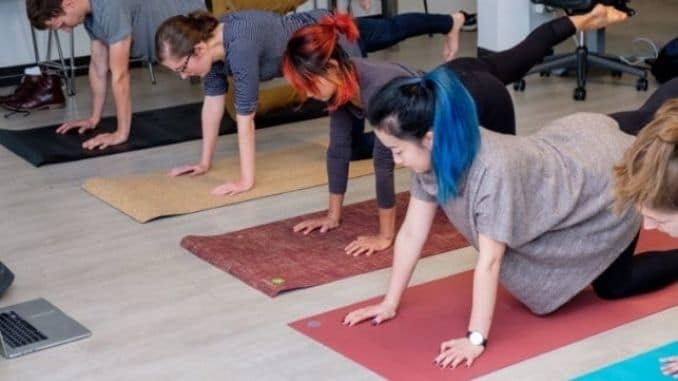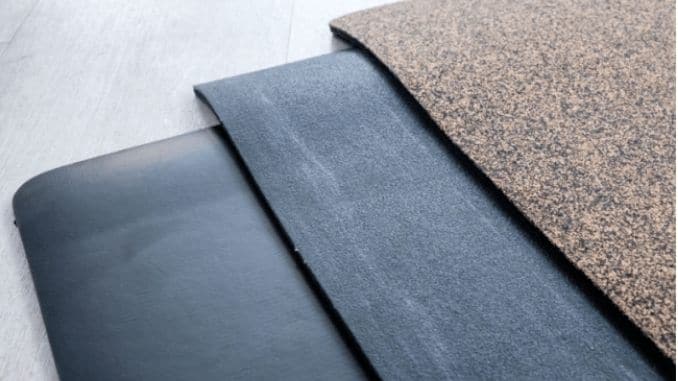
Whether you’re a seasoned yogi or a beginner, your yoga mat should be comfortable and easy to maintain. We spent one month talking to more than a dozen yoga instructors and sweating, stretching and savasana-ing it out in our offices, homes and yoga studios to find the very best mat.
How We Chose the Best Yoga Mat
Support
A good yoga mat should walk the line between being squishy enough to take some of the pressure off your joints while being dense enough to offer a stable foundation. Too-soft mats may be comfortable, but they’re difficult to hold a pose on — and while you can stand on a too-firm mat forever, you may end up hurting your joints. Beginners, pregnant yogis and people with sensitive joints should consider thicker mats, which offer more support. Yogis who commute or travel often may prefer thinner mats that are easier to roll up and carry.
Grip
The “grippiness” of a mat has two parts. One is how grippy the mat is against your hands and feet — are you slowly sliding out of place during warrior pose or are you solidly planted? The other is the traction of the mat against the floor: Does your mat slip around on smooth floors or is it stuck firmly in place throughout your session? Sweat can be a factor too, especially if you practice an intensive form like hot yoga, so you want to make sure your mat will stay grippy through it all.
Maintenance
We wanted to make sure our top picks would be easy to clean and durable ― no mid-session mat shrapnel here. We found that more porous, open-cell mat surfaces tended to be grippier, but were also harder to clean — they tend to absorb everything like a giant sponge. Smooth, closed-cell surfaces tend to be easier to clean, but maybe slipperier. The sweet spot is a mat that’s just grippy enough but doesn’t hold onto dirt and debris.
Hype
We wanted to see how the most popular options compare, so we sought out mats that people were most excited about — from old favorites like the Manduka PRO to newer releases like the Alo Yoga Warrior Mat. We sifted through numerous “best-of,” “bestselling,” and “top-rated” lists, reached out to more than 30 yoga instructors for their opinions and dug into requests and queries from our yoga-loving readers.
How to Find the Right Yoga Mat for You
Research Materials
How to Choose a Yoga Mat: A yoga mat’s material affects its stickiness, durability, comfort, texture and whether or not it’s environmentally friendly. Polyvinyl chloride (PVC) is cheaper and more durable but may be exposed to toxins during manufacturing and be less beneficial for the environment. Eco-friendly materials tend to be more expensive and degrade more quickly but are both free of toxins and more sustainable.
Consider Size
How to Choose a Yoga Mat: Instructor Amira Freidson told us that a standard-size yoga mat is 68 inches long — just long enough for someone who’s 5-foot-8-inches tall. To make sure you’re not too cramped during practice, check to see if your whole body fits on the mat while lying down with your face toward the ceiling. While there are no benefits to using a too-small mat, extra-large mats may be good for working on your flexibility. Instructor Giovanna Abraham says, “For more experienced yogis who have been practicing for 2 to 5 years, a longer mat would be helpful — for instance, in giving them greater space to extend deeper into their poses.”
Consider Portability
How to Choose a Yoga Mat: The grippiest, most comfortable yoga mat in the world is still a pain if you’re struggling constantly to lug it to and from class. If you intend on commuting with your mat, you may want to consider one that is lighter or comes with a carrying case. Just remember that if it doesn’t, a carrying case will cost extra. Weight and thickness also come into play. Heavier and thicker mats will be a bit bulkier to travel with than sleeker, thinner ones.
Choose a Price Range
How to Choose a Yoga Mat: Price is an important factor when considering a yoga mat. If you’re a new yogi, it might make sense to choose a more affordable mat with fewer frills. However, it’s also good to consider longevity vs. initial cost. All of our top picks are durable and can withstand heavy use for many classes to come, so putting down more money up front might help you avoid having to replace a cheaper mat later.
Yoga Mat FAQs
How Thick Should a Yoga Mat Be?
The standard thickness of a regular yoga mat is 4 to 5 millimeters. Travel mats are generally 3 millimeters or less and thick mats are 6 to 9 millimeters. The type of yoga you practice can help you figure out which thickness is right for you. Instructor Jane Witzenburg advises, “If you are doing a lot of lunges, use a thicker mat. If you are doing more balancing postures, use a thinner mat.”
What Does PVC-free Mean?
PVC is a synthetic material commonly used in yoga mats because it keeps slippage to a minimum, is durable, provides the most “give,” and tends to be the cheapest material. A concern with PVC, without going into too much detail, is that it contains phthalates — substances that have been linked to health issues and negative impacts on the environment.
How Do You Clean a Yoga Mat?
It’s best to clean your yoga mat at least once a week to prevent staining and buildup. Use water and gentle cleansers like lemon juice or dish soap but avoid abrasive sponges. Wipe down excess moisture and let your mat dry away from direct sunlight or high temperatures, which can accelerate the breakdown of natural materials like rubber. When in doubt, check your mat manufacturer’s care guidelines.
Are Yoga Mat Towels Necessary?
Yoga mat towels can be useful for people who find themselves slipping on their mats, typically in Bikram Yoga or “hot yoga” classes. If you invest in a quality, nonstick yoga mat, you shouldn’t find yourself slipping — even in the sweatiest conditions. Towels can also be a nice addition for wiping the sweat off your face and body during class too.
If you want to get into shape, improve your appearance and become more “in tune” with your mind, body and spirit, then check out the 12 Yoga Poses to Wake Up Energized and Start Your Day Off Feeling Fresh program.
Author Information
For more information about choosing a yoga mat or to learn about this guest author, go to https://www.reviews.com/best-yoga-mat/



